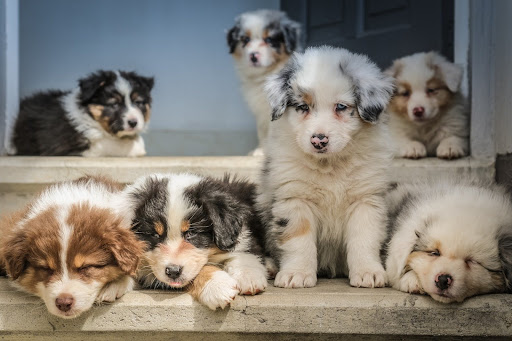Group puppy training classes in dog training camps offer an excellent environment for socialization and behaviour development. One key aspect that sets successful training camps apart is incorporating positive boosting techniques.
Keep reading the guide to explore how to effectively integrate positive reinforcement into group puppy training, ensuring a harmonious learning experience for both pups and owners.
Understanding Positive Boosting in Puppy Training
Positive boosting, also known as positive reinforcement, involves rewarding desired behaviours to encourage their repetition.
The group puppy behaviour training method focuses on motivating puppies through positive stimuli like treats, praise, and play.
The primary goal of the dog training camp is to create a positive association with desired behaviours, making the learning process enjoyable and effective.
Key Principles of Positive Boosting in Group Puppy Training
Clear Communication:
- Use concise and consistent commands to avoid confusion.
- Employ hand signals alongside verbal cues for better comprehension.
Timely Rewards:
- Instantly reward correct behaviours for strengthening the association.
- Gradually phase out treats and replace them with verbal praise as the behaviour becomes consistent.
Individualized Attention:
- Recognize and reward each puppy’s unique strengths and progress.
- Ensure that every puppy feels valued and motivated to participate.
Variety in Reinforcements:
- Mix up rewards to keep training sessions engaging.
- Experiment with treats, toys, and positive attention to discover what resonates best with each puppy.
Positive Environment:
- Foster a positive and welcoming atmosphere during group training.
- Minimize stressors and distractions to ensure puppies feel comfortable and receptive to learning.
Consistent Routine:
- Establish a consistent training routine to create a sense of predictability for puppies.
- Use a structured schedule for training sessions, reinforcing a stable learning environment.
Incorporating Positive Boosting in Group Settings
Group Challenges:
- Design group puppy training class activities that encourage positive interactions among puppies.
- Reward the entire group for collective achievements, fostering a sense of teamwork.
Group Play Sessions:
- Integrate playtime into training sessions to make learning enjoyable.
- Reward moments of positive play and cooperation among puppies.
Interactive Training Games:
- Implement interactive games that require collaboration.
- Use rewards to reinforce teamwork and good behaviour during these activities.
Consistency in Group Reinforcement:
- Ensure that all trainers in the group adhere to consistent positive boosting techniques.
- Share success stories within the group to motivate both owners and puppies.
Structured Group Exercises:
- Develop structured exercises that focus on specific training goals.
- Reward successful completion of exercises, reinforcing the connection between commands and positive outcomes.
Rotational Training Stations:
- Organize training stations that puppies rotate through during sessions.
- Provide rewards at each station, promoting engagement and enthusiasm for different aspects of training.
Socialization Opportunities:
- Create controlled socialization opportunities for puppies to interact with each other.
- Reward positive social behaviours, such as appropriate greetings and play.
Collaborative Learning Activities:
- Plan activities that require collaboration between puppies and their owners.
- Emphasize positive boosting techniques during joint exercises to strengthen the human-canine bond.
Incorporating positive boosting in group puppy training not only enhances the learning experience but also nurtures a strong bond between puppies and their owners.
By implementing these strategies, trainers can create an environment where positive reinforcement thrives, ensuring that each puppy receives tailored attention.
Conclusion
Mastering positive boosting in group puppy training at dog training camps requires a thoughtful and consistent approach.
By incorporating clear communication, timely rewards, and varied reinforcements, trainers can create a positive and effective learning environment.
As you embark on this training journey, remember the principles outlined in this guide to foster a positive and lasting connection with your furry friends.

